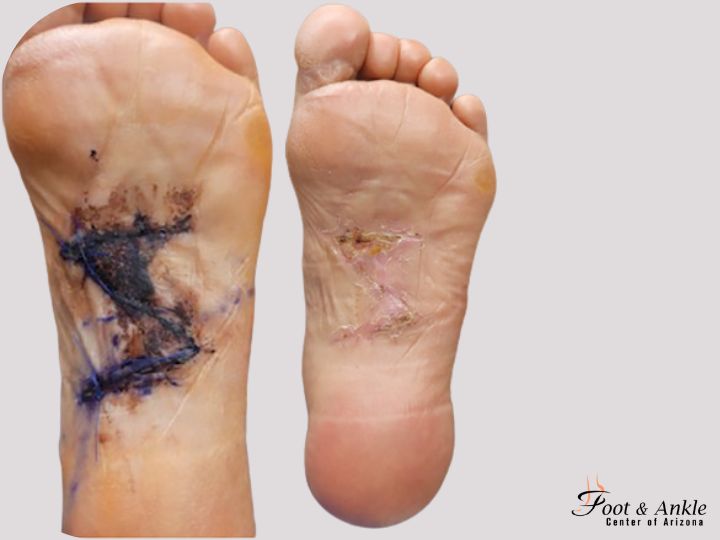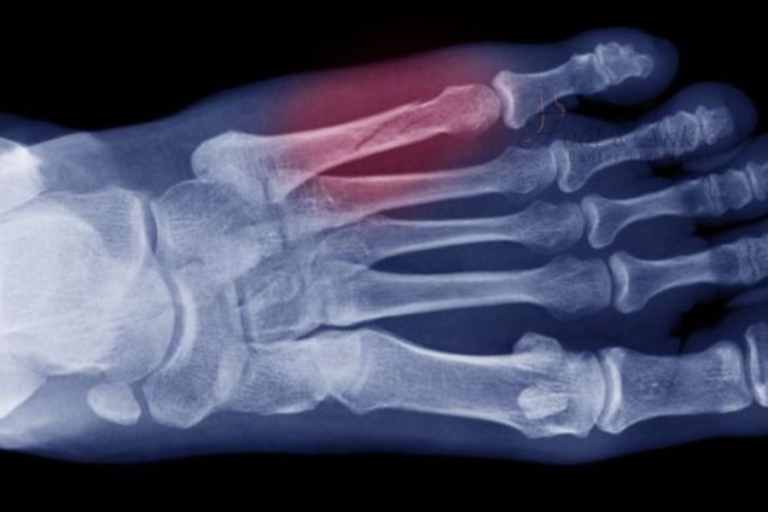Plantar fibroma is a benign but at times painful mass that presents in the arch of the foot in the plantar fascia. When conservative treatments such as orthotics, physical therapy, or corticosteroid injections are not effective in relieving the pain, surgery may be recommended. Among all the most common patient concerns with this procedure, one of them is: how long is recovery from plantar fibroma surgery?
This article goes through the recovery process step by step, what occurs at every step, and tips for a smoother healing process. Whether you are considering the surgery or have already been scheduled for it, understanding the recovery timeline can prepare you physically and mentally.
What Is Plantar Fibroma?
A plantar fibroma is a fibrous knot or nodule that forms in the arch of the foot. While it is non-cancerous, it can cause significant discomfort, especially when walking or standing. It may grow larger over time and affect your ability to wear shoes comfortably.
If the mass continues to enlarge or causes daily pain, surgical removal may be advised.
Why Surgery May Be Necessary
Conservative treatments are typically tried first, but not all cases respond well. Surgery is considered when:
- The fibroma grows or multiplies
- Pain becomes unmanageable
- Daily activities are limited
- Non-invasive treatments fail to improve the condition
However, it’s essential to understand that post-operative recovery can be lengthy and must be carefully managed to prevent recurrence or complications.
So, How Long Is Recovery from Plantar Fibroma Surgery?
The full recovery process can take anywhere from 6 weeks to 6 months, depending on the complexity of the surgery and individual healing factors. Here’s a detailed breakdown:
Week 1-2: Initial Healing Phase
During the first two weeks, the foot is usually in a cast, boot, or bandage, and weight-bearing is minimal to none. Swelling, bruising, and discomfort are common. Elevation and ice are crucial to manage inflammation. Crutches or a knee scooter may be used for mobility.
This is the most sensitive phase and requires strict adherence to post-op instructions.
Week 3-4: Transition Phase
By the third week, stitches may be removed, and you may begin light physical therapy. Limited weight-bearing may be allowed with a protective boot. However, returning to regular footwear is usually not permitted yet.
Patients often ask again, how long is recovery from plantar fibroma surgery—and this is when the answer becomes clearer. You’re halfway through the acute healing process, but complete recovery is still a few months away.
Week 5-8: Regaining Mobility
During this period, you may transition to supportive footwear. Physical therapy intensifies to restore strength and flexibility. Most patients resume low-impact activities but must avoid running, jumping, or standing for extended periods.
Soreness may persist but should gradually improve.
Month 3 and Beyond: Long-Term Recovery
At around three months, most patients regain normal mobility. However, full resolution of swelling and discomfort can take up to 6 months. Some patients may continue physical therapy to address scar tissue, tightness, or altered gait.
So, how long is recovery from plantar fibroma surgery really? While major healing occurs within the first 8 weeks, the final stages may last several months, particularly if you return to sports or physically demanding jobs.
Potential Complications That May Affect Recovery Time
While most recoveries are smooth, some risks could delay healing:
- Recurrence of the fibroma
- Nerve damage leading to numbness or tingling
- Infection at the surgical site
- Scar tissue affecting foot mechanics
These issues can extend the recovery timeline and require additional treatments.
Factors That Influence Recovery Time
Several factors can affect how long is recovery from plantar fibroma surgery, including:
- Age: Younger patients may heal more quickly.
- Health status: Conditions like diabetes or poor circulation can slow healing.
- Post-op care: Following all instructions helps prevent setbacks.
- Occupation: Jobs that require standing or walking may delay your return to work.
- Physical activity: Athletes may need longer rehabilitation for full return to sport.
Tips for a Successful Recovery
Here are some essential tips to make the recovery journey easier:
- Follow all doctor’s orders: From weight-bearing limits to medication schedules.
- Attend all follow-ups: Your podiatrist will track your healing and address any issues.
- Commit to physical therapy: Rehab exercises are key to regaining mobility.
- Wear appropriate footwear: Supportive shoes reduce pressure on the healing site.
- Be patient: Rushing back to activity can set you back.
Frequently Asked Questions (FAQs)
1. How long is recovery from plantar fibroma surgery for athletes?
Athletes may need up to 6 months before returning to full activity, depending on the intensity of their sport.
2. Will I need physical therapy after surgery?
Yes, physical therapy is often necessary to help restore flexibility, strength, and prevent scar tissue buildup.
3. Can plantar fibroma come back after surgery?
Unfortunately, recurrence is possible, especially if the entire fibroma isn’t removed or if you have a predisposition.
4. How long is recovery from plantar fibroma surgery if I work on my feet?
You may need 8–12 weeks off or more if your job involves prolonged standing or walking. Light-duty work might be allowed sooner.
5. Is the recovery time worth the relief?
For many patients who suffer from chronic pain and mobility issues, the long recovery is worthwhile for the improved quality of life afterward.
Summary
Recovery from plantar fibroma surgery typically takes 6 weeks to 6 months, depending on the extent of the surgery and individual healing rates. Most patients can resume light activities within 4–8 weeks, but full recovery—including return to sports or heavy work—may take several months. Physical therapy and proper foot care can help speed up the healing process.




